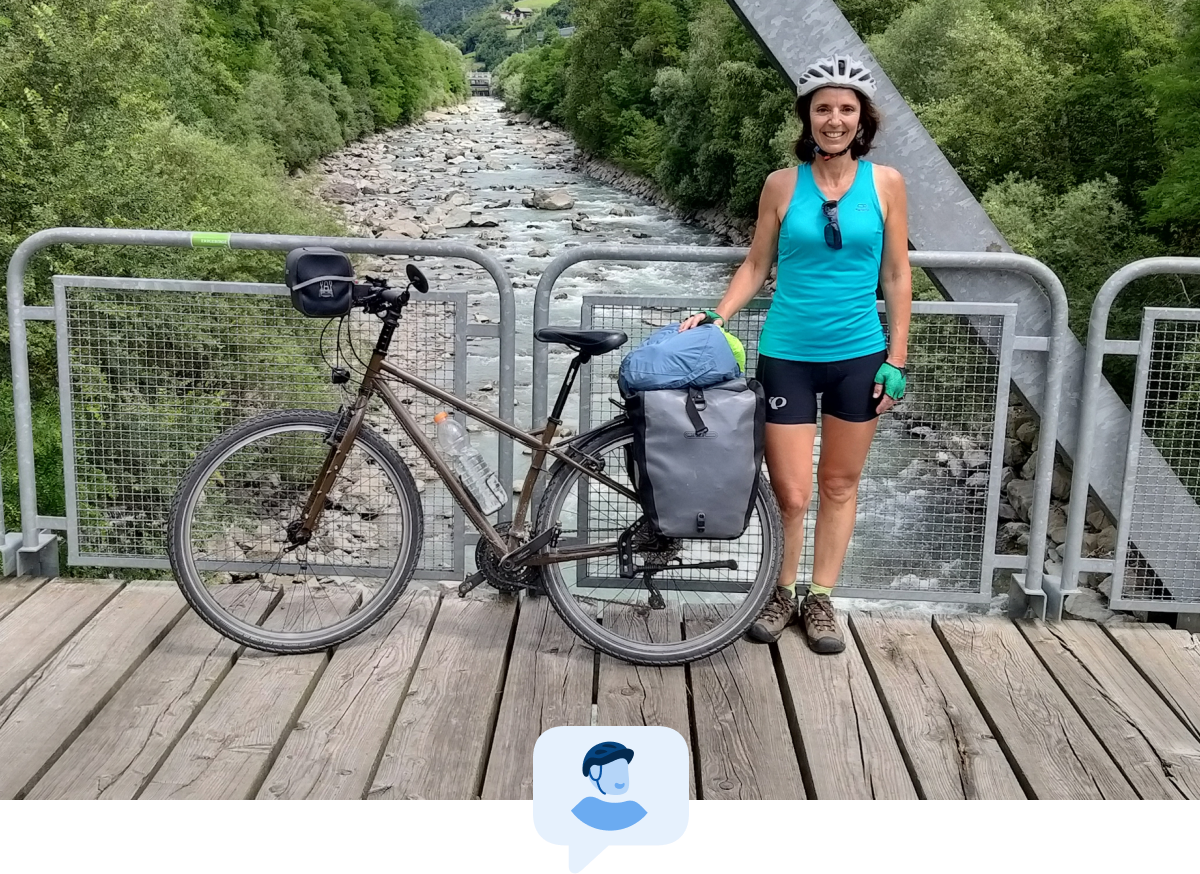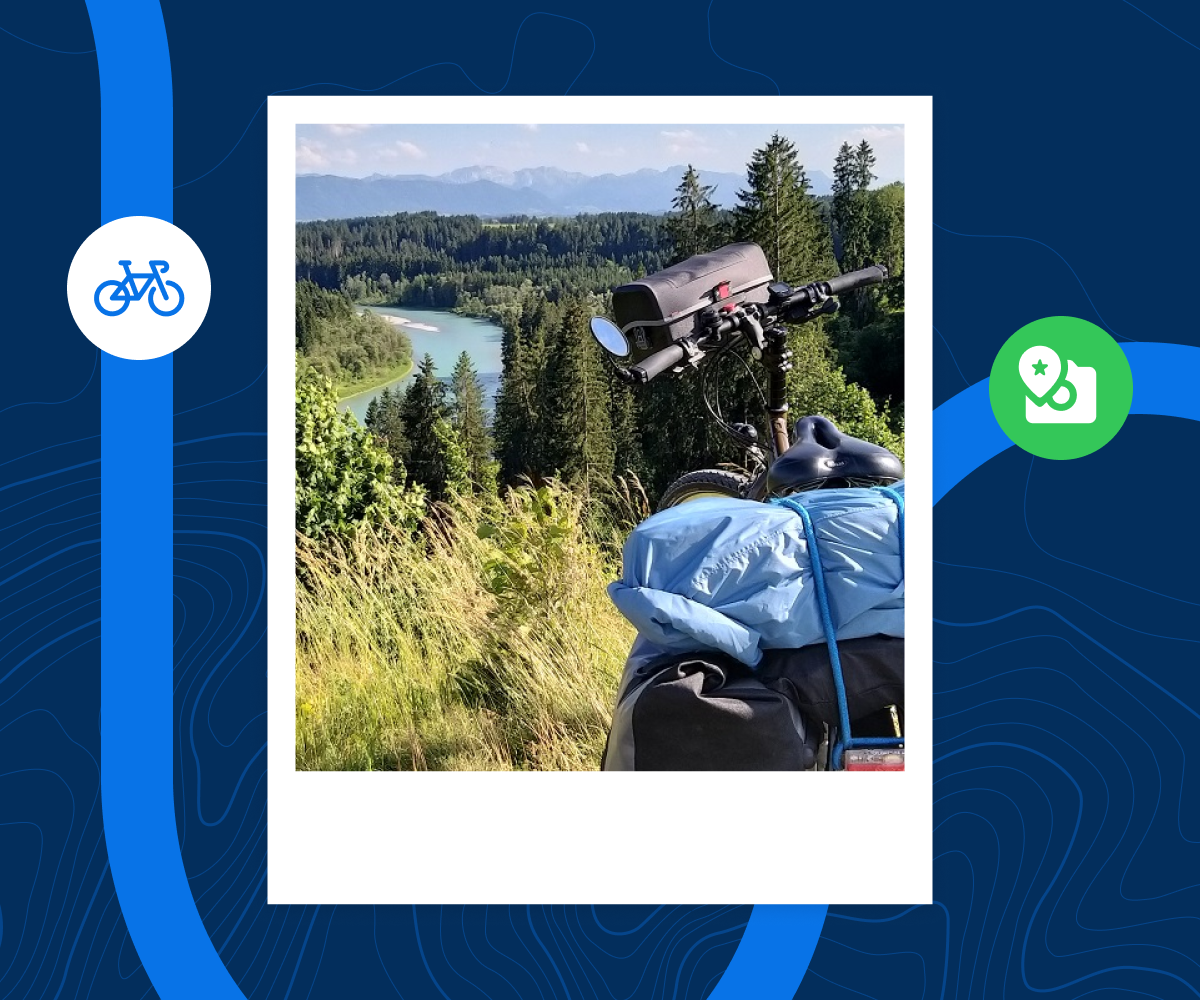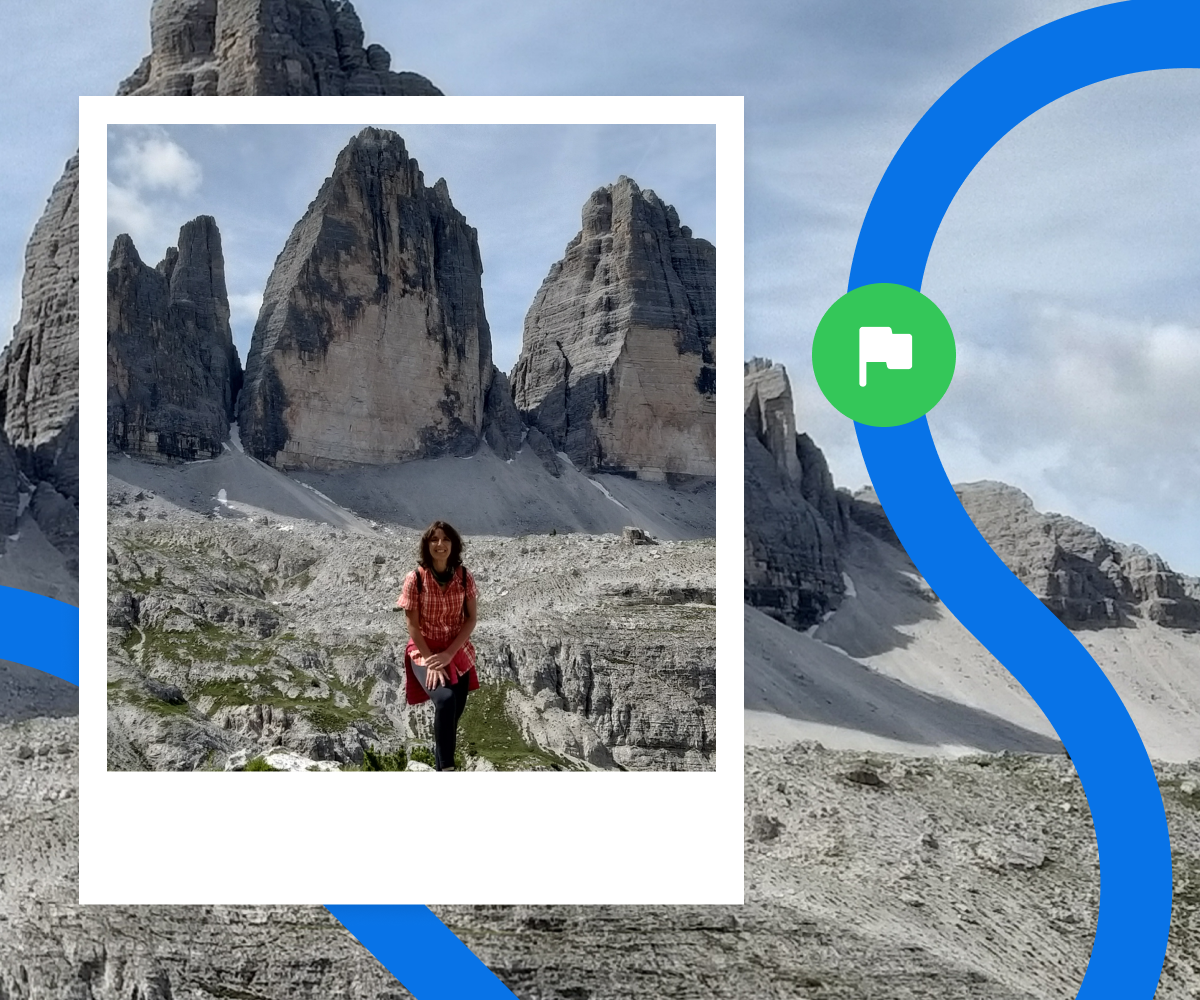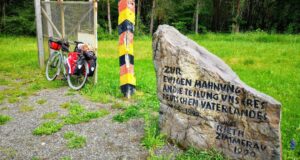
Written by Suni Belliure
A Ride through history: over the Alps and the Dolomites by bike
One summer, I embarked on a remarkable cycling journey along the Via Claudia Augusta. This historic route traces its origins back to Emperor Claudius over 2,000 years ago. My expedition took me from Donauwörth, Germany, to Bolzano, Italy, and further into the enchanting Dolomites, reaching Vittorio-Veneto. This iconic cycling path led me through picturesque landscapes, blending natural beauty with ancient history as I followed in the footsteps of the Romans who once constructed the only road over the Alps.
⛰️ Road conditions: 80% paved, 20% unpaved, good cycling conditions
🗓️ Days: 15 days by bike + 1 day hiking in the Dolomites
Along The Via Claudia Augusta
Some 2,000 years ago, Emperor Claudius personally funded the construction of the only Roman road over the Alps. The Via Claudia Augusta linked the Adriatic port of Altinum and the little town of Ostiglia on the river Po with the wealthy province of Rhaetia, its capital Augsburg, and the river Danube. Today, we can cycle this ancient route across Germany, Austria, a brief section in Switzerland, and Italy along one of the best cycleways in Europe. Below, you’ll find the highlights of my route through the different countries in the order I encountered them.
🇩🇪 Highlights in Germany
📍 Donauwörth: The official beginning of the route, a charming town by the river Danube. The archaeological Museum showcases numerous Roman artifacts.
📍 Augsburg: Founded by the Romans as Augusta Vindelicorum. Don’t miss the Fuggerei, a community of houses built by the Fugger family for the poor in 1521.
📍 Landsberg am Lech: A historic town by the river Lech with medieval gates and fascinating buildings.
📍 Epfach: You can cycle on a stretch of the ancient Roman road.
📍 Lechsee and Forggensee: Thrilled to get the first sightings of the Alps in these excellent surroundings.

🇦🇹 Highlights in Austria
As I cycle through the mountains and meadows, the landscape increasingly becomes the main highlight.
📍 Reutte: Past the city, after a steep climb, is the Ehrenberg Klause, a fortification built to control the trade in salt.
📍 The Fernpass: Accessible via an unpaved road for cyclists or by taking the shuttle at Biberwier. The views are breathtaking.
📍 Imst: Known as the city of fountains, the route follows the river Inn from here.
📍 Pontlatzer Brücke: The “Long Bridge” near Prutz, originally constructed by the Romans and the scene of several battles in the 18th and 19th centuries.
📍 The Altfinstermünz: Located between Pfunds and Martina in a deep, narrow river gorge, it was the site of a Roman bridge and later served as an ancient border crossing. The bridge and the fortification now house a museum.
📍 The Reschenpass/Passo di Resia: Cycling gently by the river Inn to Martina in Switzerland. From there, again in Austria, begins the climb along a paved road with many switchbacks to Nauders and the pass, the highest one on the route. It not only marks the border between Austria and Italy but also serves as a watershed: to the north, the rivers flow into the Danube and the Black Sea; to the south, they flow into the Adriatic Sea.

🇮🇹 Highlights in Italy
📍 The Reschensee/Lago di Resia: This man-made lake, formed by merging two minor natural lakes in 1950, submerged the village of Graun im Vinschgau/Curon Venosta. Today, the intriguing view of the spire of its church emerging from the waters captivates visitors.
📍 Glurns/Glorenza: A charming medieval town adorned with porticoed streets, fortified gatehouses along its wall, and a wooden bridge over the river Etsch/Adige.
📍 Naturns/Naturno: Home to Schloss Kastellbell/Castello di Castellbello and Sankt Prokulus church, featuring ancient frescoes dating back to the 7th and 8th centuries.
📍 Meran/Merano and Bozen/Bolzano: Two captivating and beautiful cities offering a plethora of sights to explore. Both boast busy porticoed streets and delightful terraces perfect for observing the world go by.
The Dolomites
In Bolzano, I departed from the Via Claudia Augusta and its Roman traces. I headed northeast, tracing the rivers Eisack/Isarco to Brixen/Bressanone and Rienz/Rienza to Toblach/Dobbiaco. From there, I followed an old rail line, the “Ciclovia delle Dolomiti,” to Calalzo di Cadore and continued along the river Piave to Farra d’Alpago, finally reaching Vittorio-Veneto. It was there that I sadly bid farewell to the mountains and cycled towards Trieste, my final destination. But that’s another story…

🏔️ Highlights in the Dolomites
The main highlights are the different cycleways that traverse this magnificent landscape.
📍 The Eisack/Isarco Cycleway: Leading from Bozen/Bolzano to Brixen/Bressanone, passing through the beautiful village of Chiesa.
📍 The Pusterbike Cycleway: Leading from Brixen/Bressanone to Toblach/Dobbiaco, with the charming town of Bruneck/Brunico along the route, well worth a visit.
📍 Hiking around the Tre Cime di Lavaredo: For a day, I left my bike and hiked the trail around the emblematic massif. Taking the bus from Dobbiaco to the Auronzo refuge and returning from there to Dobbiaco, I explored the traces of 1st World War shelters in those high surroundings, thoroughly enjoying the beauty of the scenery.
📍 Ciclovia delle Dolomiti: Leading from Dobbiaco to Cortina d’Ampezzo and Calalzo di Cadore, this old rail line, built by the army during the 1st World War, passes through quite an isolated area dotted with lovely abandoned stations. There is a war cemetery on the route, only a few kilometers from the lake of Dobbiaco.
📍 The Piave Cycleway: Leading from Calalzo di Cadore to Farra d’Alpago, it follows a stretch of the München-Venezia cycle route and then a section of the Via Regia. The lake of Santa Croce in Farra d’Alpago offers a relaxing atmosphere.
The Basics
Equipment: A touring bike loaded with rear panniers, a sack over the panniers (for the tent and sleeping mat), and a handlebar bag. All pieces of luggage are waterproof. No stove or cooking utensils, just a camper set with a plate, mug, cutlery, and a food container.
Accommodation: I stayed at camping sites, hostels, and hotels. It wasn’t a problem to find a place after each day trip without a reservation (especially being just one traveler). There are plenty of different lodgings to choose from along the route. This gives extra freedom to shorten or lengthen the ride every day.
Food: Food is readily available everywhere. Supermarkets, shops, bakeries, and street markets provide all you need. And a meal at a restaurant from time to time is a good counterpoint to try the local specialties.
Prices: Travel expenditure is very personal; it depends on what things you prioritize (and on your budget!). I don’t go to restaurants much, but I do love spending a night in the privacy of a room of my own with its bathroom, especially after several days camping. My biggest expenditure was accommodation: because of the rain, I didn’t stay in campsites as much as I had originally planned. Prices for hostels, pensions, and hotels ranged from 40 to 70€ for a single room. Camping site prices for one person, one tent, one bike, without electricity were between 11 and 20€.
Difficulty of the route: Although the route traverses some of the most mountainous areas in Europe, it is not hard – to follow the ancient Romans’ steps in the Via Claudia Augusta means riding along three main rivers – Lech, Inn, Etsch/Adige – into the valleys and dealing with two beautiful, assumable – especially from North to South – mountain passes: the Fernpass in Austria and the Reschenpass between Austria and Italy. Besides, there is a regular shuttle across the two Tyrolean passes, so it is perfectly manageable for seniors or families. The Dolomites cycleways also follow the course of the rivers, as well as ancient unused railways.
Navigation: The route is mainly well signposted. Sometimes confusion arises from the numerous different cycling routes and detours available in the area, but then the Bikemap app will take you back to your intended track.
Travelling with a Bike
It isn’t the first time I’ve spent my holiday cycling in a distant destination from home. I usually protect my bike with bubble wrap, embark it on a plane, and hope for the best. However, this year I wanted to try an alternative to flying. I would have loved to travel by train, but coordinating the tickets online for me and the bike through different countries was a mission impossible. So I turned my eyes to the road: I found a company, Flixbus, which carries bikes for a little price added to the ticket. I must say that the experience was not good. Very few buses take bikes, so it was extremely difficult to find a ticket. But the worst is that they are not reliable: last moment cancellations because of the bike, contradictory rules about using the outside rack for the bikes or carrying them in the luggage hold (underneath several heavy suitcases), delays… I’m afraid I’ll fly again next time.
The most difficult part of my tour was both getting to Augsburg and leaving Trieste by bus with the bike. It was far too long a process, not pleasant and with some bad surprises from the bus company. But cycling has such an endorphin boost effect that I forgot everything the moment I started pedaling. As a woman solo traveler, I always felt very safe and comfortable throughout the countries I traversed. Everybody was kind and helpful to me, especially two German cyclists that helped me pass over the rocks on a broken section of the cycleway in Italy. Solidarity among fellow travelers is so special!
My Very Favorite Aspect of My Whole Journey
As always, my true happiness lies in the simple act of riding my bike through nature. In this particular voyage, the superb views of the mountains became my absolute favorite scenery. Once again, I discovered that the speed of a bicycle is the optimal way to absorb it all. Another cherished aspect, common among cyclists, is the profound sense of freedom that comes from traversing the landscape with just a few essential belongings— the sheer simplicity of this kind of journey. I also relish the fact that it offers one of the best ways to be present in the moment, attuned to all the stimuli that surround you, especially when traveling solo.




